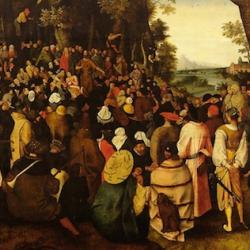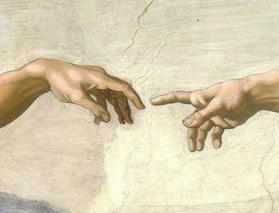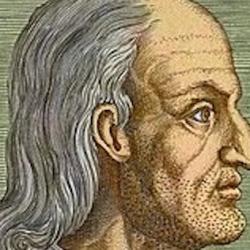Robert Ellis (Games People Play) has a lot of critical things to say about sports, but the aim of his book is to analyze and ultimately to defend sports in theological terms. He’s comfortable with the Victorian Settlement.
He does that in part by correlating the results of his own survey about why people play sports with various religious experiences (borrowed partly from William James). Players describe sports as rejuvenating, a regenerating activity; they are deeply communal, like religious rituals; there can be a kind of mystic experience in the midst of a game, a self-forgetfulness as the player so enters the flow of the game that he becomes indistinguishable from the game. Ellis knows that people have similar experiences in other areas of life—writing, painting, conversation, teaching, playing or hearing music, etc. But he’s writing about sport so he tries to show how quasi-religious experiences are to be had on the court and the field. Citing Peter Berger, he suggests that sports can provide “signals of transcendence.”
This is rooted, he thinks, in the imago Dei. We play because we are made in the image of a playful God whose creation is the product of His play. In games, we create a world: “The game is its own world, and boundaries are created or observed (that fence is out of bounds, this corner is the hospital ward) and the freedom of play is exercised within these boundaries.” Sports, with their “bureaucratized” rules “may be said to be more truly creaturely than play, because sports players do not set their own boundaries even though they push at them constantly” (141). Even sports, though, are worlds of human creating.
This angle allows him to provide a defense of competition in sports. God, after all, is a winner, and Ellis gives some attention to “Jesus the competitor,” Christ the Victor. And, he argues, there is even a way to compete that is compatible with love for one’s neighbor, even for one’s opponent. He’s not Pollyannish about competitiveness; he knows that our disordered desires twist competition: “Sport is not simply a locus for sin, but for original sin. We sin in sport, but the sin of other individuals and collectives surrounds us in it before we have thought or acted for ourselves as sportsmen and women” (219). This real potential for evil and corruption doesn’t mean that competition in sports is inherently evil.
Ellis goes a long way in describing the “soteriological” dimensions of sports, and that may seem dangerous terrain. But Ellis doesn’t see sports as being different from other human activities. Anything we do might be participation in the playful creativity of God; or it may be an act of alienation from God. Winning or the game itself can become functionally idolatrous, and that is a real danger of professional sports today. Yet Ellis argues that every licit human activity can be done in union with Christ and in the power of the Spirit, and then it is not only a participation in God’s creative life but has potential to make us more fully human, more fully the image of the playful, powerful Creator.
This is a powerful defense, but perhaps it’s too easily tied off. Ellis argues that Paul’s athletic metaphors show some knowledge and toleration, if not endorsement, of ancient games. But when Paul actually talks directly about bodily disciplines, he makes a negative comparison with “godliness” and says that bodily disciplines have only limited benefits (1 Timothy 4:8). Ellis’s tempered Victorianism might best be tempered further with a stronger dose of Pauline and patristic and Puritan skepticism.















